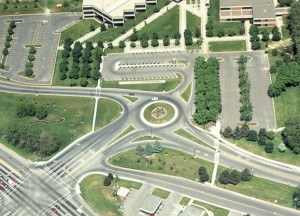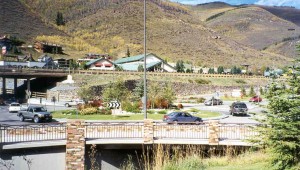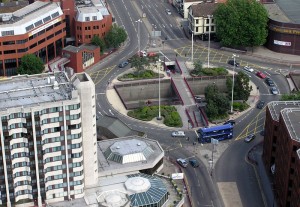
A Beautiful Way to Get Around!
|
|
|||||||||||||||
|
We are associated with many of the world's leading experts in intersection efficiency and sustainable design.
Innovative Sponsors
Sponsored Links
How To ...
|
Roundabouts - A beautiful Way to Get Around!
The Modern Roundabout - the right choice for many locations! |
Recent Updates
|
||||||||
Say Goodbye to the Notorious Traffic Circle!Just a few years ago, when driver's heard of a Roundabout, they would
think of Chevy Chase stuck endlessly in a European traffic circle.
Those who had encountered them found them difficult to navigate and
anything but efficient. So how did this old, frustrating concept enjoy a
rebirth to qualify as an Alternative Intersection and emerge as one of
the most popular designs in history? Older circles required traffic
already in the circle to yield to traffic about to enter. The modern
roundabout inverted this, and instead required entering traffic to
yield. This change, along with better channeling and other features,
unlocked the potential. Suddenly drivers found them very intuitive. Just
yield at the approach, then go so long as there is a sufficient gap to
your left. Once inside, circle to whichever street you want, unimpeded.

The
first roundabout in Utah opened at Utah Valley University in 1996. What
had been a confusing stop-yield intersection cleared up nicely,
convincing engineers that roundabouts should be seriously considered.
Photo and history courtesy of RoundaboutsUSA.
Success unlocks their potentialThe first few modern roundabouts were able to solve awkward intersections that were previously unsolvable, helping them earn a great reputation. With planters and monuments, they are attractive and help create a sense of place. They also calm oncoming traffic, which combined with far fewer conflict points, and have helped them prove to be very safe intersections for both vehicles and pedestrians. Single-lane roundabouts have significantly better capacity than a
four-way stop. They also work well as replacements for lower-volume
signals. A mini-roundabout appears very nearly the same as a regular
residential intersection, but has a painted or small raised island in
the center encouraging vehicles to use the right-of-way rules of a
larger roundabout, but with a lower cost and smaller intersection
footprint. Single-lane and mini-roundabouts are great choices for
residential areas.
There are only a few multi-lane roundabouts, but they are proving
able to serve similar volumes as what might occur when a minor arterial
meets with a major collector. In extremely high volume environments,
the size of the roundabout required for high efficiency may be
prohibitive. But fortunately there are other Alternative Intersections!
One such option is a Bowtie, a sub-category of the ThrU-Turn
intersection style. With a Bowtie, rather than put a roundabout in the
center of a primary intersection, roundabouts or ellipsabouts are
off-set between 300 and 700 feet. Left turning traffic first travels
Through the main intersection, makes a U-turn using the roundabout, then
makes a Right. Hence the name ThrU-Turn, for Thru-U-Right. A Bowtie
system with two small roundabouts can attain significantly more capacity
than a single larger roundabout in the center of an intersection.
How did these become popular? Where can I learn more?
Vail,
Colorado - location of the first roundabout interchanges in the United
States. Designed by Ourston.com. Photo courtesy of RoundaboutsUSA.
RoundaboutsUSA is
among the most popular repositories of the history and current status
of the use of roundabouts. They report that as of 2010, there are over
2,500 known sites in the USA, with many more mini and sub-division
sites. They note that the basic changes that define a modern roundabout
were implemented in England in about 1963. Leif
Ourston was the first to bring them to America, opening one in 1990 as
part of the Summerlin development in Las Vegas, then opening the first
roundabout freeway interchange in Veil, Colorado. They took off in Utah
around 1996. From these few western states they have propagated across
the nation and are experiencing a rejuvenation across the world.

Traffic
circle in Bristol, England over the top of a freeway. Notice the stop
bars both inside the circle, and on the approaches. Yikes!
Roundabouts are "Alternative Intersections"InnovativeIntersections.org provides a wiki-type record of the locations and attributes of interesting roundabouts as well as other design styles. Because there are so many roundabouts, it is not practical nor desirable to record them all. Instead the focus is on some of the more interesting applications of roundabouts. An "Innovative", or "Alternative Intersection" generally meets two criteria:
Roundabouts are more efficient than many signalized intersections,
and they achieve their efficiency largely by handling left-turning
vehicles without the aid of a left-turn arrow. And though they are now
very common, they were not just a few years ago, so they can still be
considered Alternative Intersections.
|
||||||||||